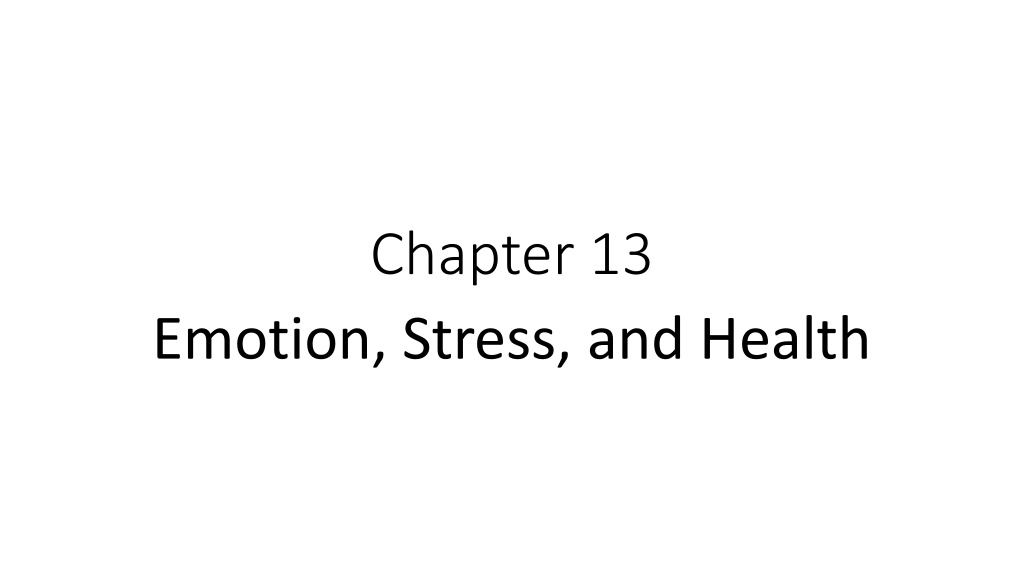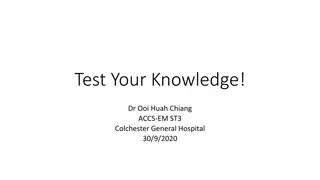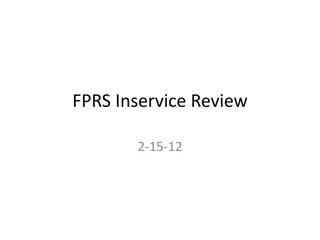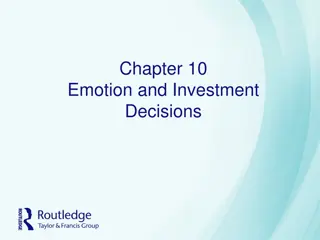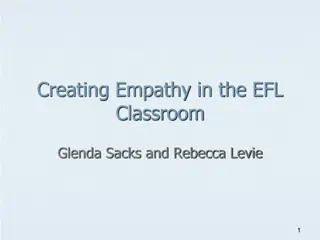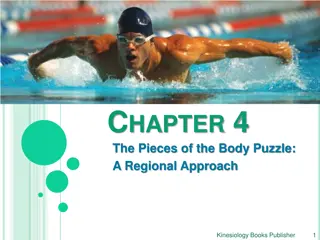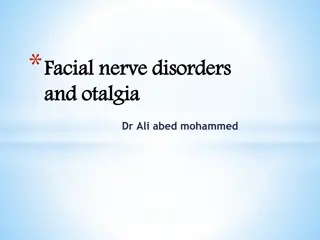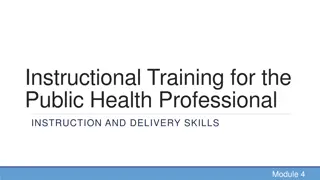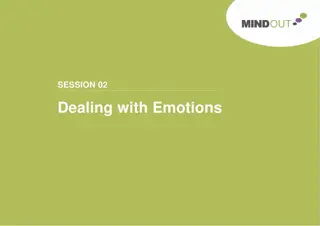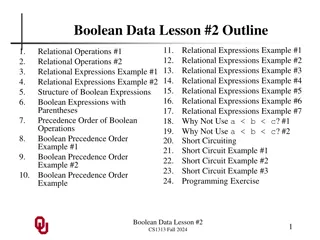Understanding Emotions and Facial Expressions
Explore the nature of emotions, primary and secondary emotions, and how facial expressions play a vital role in human interactions. Discover how emotions are expressed universally and their impact on communication and psychological well-being.
Download Presentation

Please find below an Image/Link to download the presentation.
The content on the website is provided AS IS for your information and personal use only. It may not be sold, licensed, or shared on other websites without obtaining consent from the author. Download presentation by click this link. If you encounter any issues during the download, it is possible that the publisher has removed the file from their server.
E N D
Presentation Transcript
Chapter 13 Emotion, Stress, and Health
The Nature of Emotion Section 1
The Nature of Emotion From the ancient Greeks (3000 B.C) until roughly mid 1950 s emotion was thought to be IRRATIONAL and ILLOGICAL. Some older folks (65+) still purposely hide their emotions as they were taught emotions show weakness in the U.S. Emotions are NOT irrational, even when they appear random. Emotional Disorders may be the opposite
Primary Emotions Your bodies 1streaction to a situation Using you GUT is the bodies natural way to determine a quick decision. Fear, Sadness, Anger, Joy, Surprise, Disgust and Contempt They are very primal and instinctual
Continued Expressed the SAME way all over the world Facial features also the same Ex. Sadness follows loss Fear follows threat Anger follows insult or injustice
Emotions and the Body Every human is born with PRIMARY EMOTIONS. Secondary emotions depend on culture and cognitive maturity. In 1872 Charles Darwin claimed to be the first to describe emotions as an evolutionary trait. His argument on emotion has mostly been accepted and still holds up today.
Face and Emotions Smile = happiness Frown = sadness Glare = anger Developed by humans to tell friend vs. foe Ex. African tribes can read faces of Americans Can also pick out people faking emotions
The Functions of Facial Expressions When told to feel an emotion research has shown our brain changes our mood to that feeling Facial Feedback is thought to be an evolutionary trait used to warn other humans about danger As a parents to a newborn our emotions to them have the greatest influence on their moods until they are around 1 (mimic effect) We have also learned (through culture) to hide our emotions
Emotion and the Brain Brain injuries can have serious effects on a persons ability to display emotions. Ex. A person who has had a stroke often cannot show disgust or constantly appears to show disgust. The left prefrontal cortex is responsible for happiness and positive feelings The right prefrontal cortex is responsible for disgust, anger, depression
Emotion and the Mind A memory is best remembered based on it s physiological arousal and cognitive interpretation. One of the best ways to remember anything is to place an Emotional Marker to it. When we are emotionally effected by a memory, we are more likely to remember it. Ex. 9/11, a sudden death of a loved one, memories of old pets, bad tests grades.
13.1 Review 1. What is a PRIMARY EMOTION? List them. 2. Who was the first person to academically define emotions as a evolutionary trait? 3. What is the responsibility of the LEFT PREFRONTAL CORTEX? 4. What is the best way to remember something?
Emotions and Culture 13.2
How Would You Respond? Do Not Copy Imagine: Imagine you are living with the love of your life. You and your partner have a house together and plan on spending your lives together. One day your significant other picks a stranger up from the side of the road. They look like they needed help. Your important person invites them over for dinner with you. They then after dinner your significant other offers them to spend the night at your house. Now in the morning you go to Dunkin to get breakfast 20 minutes away. When you return you find your significant other and the stranger making out in your livingroom. How do you feel? What would you do? Write a 3 sentence response.
Cultural Reactions In America we would be likely fuming mad In the Pawnee Indian Nation just the significant other offering dinner would send the other into anger In rural India nothing might happen as a couple is allowed to take more lovers if the other person is fine A Inuit husband is obligated to offer his wife to a stranger only once
The Varieties of Emotion Different cultures have specific names for certain emotions. Schadenfreude- German: Feeling JOY at another's suffering. Hagaii- Helpless anguish. Most often described by those who were about to commit seppuku. These are SECONDARY EMOTIONS. Emotions related to ones culture.
Communicating Emotions Every culture/ time period has a set rules to communicate emotions. Ex. #1: In Japan since the end of WWII writing someone s name in RED has been associated with meaning you want them dead. GREEN symbolizes peace and happiness Ex. #2: Texas University (Hook em Horns!) Italy: Your wife is cheating!
Display Rules Govern how a person is suppose to show emotion in a situation Ex. Funerals: Some cry outwards / or tearless; others will dance and drink Body language has vast variations by country and even sections of some countries. This is why even if you can thoroughly speak another countries language you often are still identified as a tourist.
Gender and Emotion Women More likely to suffer from emotional disorders Men Less likely to REPORT emotional disorders More likely to seek treatment for emotional disorders Repress feelings of grief or grieve inwardly Express grief and sadness more outwardly Express anger freely Won t express anger as easily
Section 2 Review 1. What are SECONDARY emotions? 2. Name and describe 1 of the 2 given secondary emotions. 3. What are DISPLAY RULES? 4. Which gender is more likely to suffer from depression and mental health problems?
The Nature of Stress 13.3
Stress and the Body The modern study of stress began with Hans Selye in his 1956 book The Stress of Life. Before Selye stress was just considered part of life and should be dealt with internally. Selye s main theory is that heat, cold, pain, toxins, and danger disrupts the bodies equilibrium. Then the body has to fight these stressors to regain balance.
Selyes Theory To regain equilibrium the body must go through a series of physiological steps. This is called general adaption syndrome 1. The Alarm Phase- The sympathetic nervous system is mobilized. In this stage the adrenal glands release ADRENALIN Flight or Fight response occurs
Flight or Fight Positives Increased heart rate (pump more blood to muscles) Negatives Auditory exclusion (hearing loss) Tunnel vision / Loss of peripheral vision Dilation of blood vessels (for muscle) Dilation of pupil (more light) Relaxation of the bladder Blood clotting speeds up in case of injury Shaking
2. The Resistance Phase The effects from the alarm phase are still active. As a result your body is more susceptible to disease and other stressors. It is focusing on your stress and immunity often weakens Over time the body will adapt and eventually adapt to return to normal
3. Exhaustion Phase Stress is persistent it depletes the bodies energy reserves and also weakens it s immunity to disease The first two phases will weaken the body and are long term unhealthy Signs of significant exhaustion are headaches, neck pain, high blood- pressure, and digestive problems If the person experiences infrequent intake of food it will cause health issues. Ex. When famines hit
Selyes Conclusion People should NOT aim to be stress free. Certain stressors are good such as exercise, *being in love*, working hard on personal/ work projects. Modern life creates negative stress in everyone. Do not avoid it, but accept it. Stress is unavoidable!
Current Views of Selyes Theory and Current Approaches to Stress His theory was relatively correct He was correct in his definitions of the effects of short and long term stress He thought that all people respond roughly the same to all stressors In reality everyone responds differently to each individual stressor and depending on medical health
Stress and the Immune System WHITE BLOOD CELLS are responsible for protecting the body from diseases. Sustained stress suppresses and kills white blood cells. The Herpes virus is more likely to infect college students during the week before mid-terms. Loneliness has also been found to effect white blood cells.
4 Kinds of Stressors: 1. Noise In children, sustained loud noise has been shown to increase blood pressure and stress hormones. Children who live near loud areas have increased instances of learning disabilities. In adults cardiovascular, fatigue, irritability, and aggressiveness increases.
2. Bereavement and Loss In the 2 years after loss, widows show increased instances of illness and mortality. Broken Heart Syndrome Divorce / widow has been shown to increase trouble sleeping, improper diet, increased tobacco, drug and alcohol use
3. Work-Related Issues Work and Unemployment is one the most common stressors in America. People who reported regular stress from work had a 5.5x the risk of rectal and colorectal cancer rates Money can t buy love, but will make life easier
It costs ______ more to eat (Healthy or Unhealthy) $500 $1,000 $1,500 $2,000
4. Poverty and Powerlessness The lower your ECONOMIC status the more likely you are to eat unhealthy food. Increases your chance for obesity and heart issues Poorest areas have high crime, unemployment, poor housing, cash strapped schools, and higher chances of chemical contamination. Also have a higher chance of developing kidney disease, strokes, and heart issues.
13.3 Review 1. Who is the main researcher into stress that we learned about? 2. List the 3 phases of stress. 3. List the 4 main stressors. 4.Explain what GOOD stressors are.
13.4 Stress and Emotion He who pursues revenge digs two graves. -Chinese proverb
Diagnosed Depression Linked to reliably increase heart disease, cardiovascular issues, and early death. The studies compare non-depressed and diagnosed depressed people. The results hold up even when separate studies with people who have high blood pressure, smoke, obesity, and family history of heart disease. There is no solid link between depression and cancer or AIDS.
Emotion Inhibition and Expression Do not suppress feelings. Your brain actually subconsciously thinks about the problem more. When facing a breakup not thinking about the person prolongs your attachment to them. People who suppress emotions are at the greatest risk of developing illness from their emotions. The prolonged suppression acts like prolonged stress on the body.
The Benefits of Confession and Letting Go Holding on / rehearsing fights is harmful. Being angry, sad, and anxious are normal feelings. People going through emotional breakups who openly shared their feeling had better white blood cells counts than those that refused to confess. Forgive people when possible.
13.4 Review 1. People who are chronically angry and stressed are how many times as likely to develop cardiovascular problems? 2. What are some health risks associated with diagnosed depression? 3. Explain how to scientifically deal with a break-up?
How to Cope 13.5
Cooling Off The best way to immediately handle stress is to take a few deep breaths. Progressive Relaxation- is the study of learning how to alternately tense and relax muscles to clear your mind. Ex. Yoga breathing exercises It has been shown to lower levels of blood pressure, stress hormones, anger, and anxiety.
Stress Release EXERCISE is a great way to release stress. The distraction it provides shifts the brains focus and disrupts the alarm phase in the stress cycle. Finding your own way to release stress is recommended. Ultimately, if the stressor is serious enough these strategies will not work. They are quick fixes, not solutions
Cognitive Coping Methods 1. Reappraisal- Find the benefits of what you have now. Do not let the stressor control your life 2. Learn from the Experience. 3. Make social comparisons- Is your life really that bad? 4. Create a sense of humor- Only researched way to cope with bad stressors
Draw on Social Support Suicide Hotline- 1-800-273-8255 PLEASE TALK TO SOMEONE IF YOU NEED HELP.
13.5 Review 1. People who are chronically angry and stressed are how many times as likely to develop cardiovascular problems? 2. What is progressive relaxation? 3. List the 4 effective cognitive coping methods.
